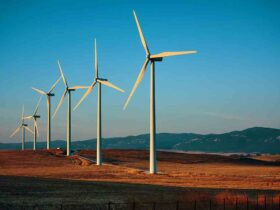Excellent article on energy use and the hypocrisy of most environmentalists.
(skip)
Jeff Bezos of Amazon is another prominent figure generating a pretty massive carbon footprint. Picture a university student bouncing out of bed on a Sunday morning and clicking the “Buy now with 1-Click” button before strolling off to a pipeline protest.
This click likely prompts a coal-fired factory in China to manufacture the item (67 percent of China’s electricity was generated from coal in 2017), which is then transported via diesel-powered truck or train to an air- or seaport, followed by an oil-fuelled ship or plane ride to North America, yet another leg by diesel-powered truck or train to a distribution centre and, ultimately, a gasoline-fuelled delivery truck doing the “last mile” run.
The next day, while that student is in class, that truck drops off items to various students at the university – all one-off, instant-gratification purchases. There is, unsurprisingly, a direct and strong decade-long correlation between Amazon’s revenue and total U.S. trucking miles, both of which continue to break annual records. Then tie that with a recent Amazon press release about the company ordering 20,000 Mercedes-Benz Sprinter vans for last mile delivery.
(skip)
Environmental activists, the news media and millions of people are inclined to blame fossil fuel producers, auto manufacturers and drivers of oversized vehicles for so-called carbon “pollution”. But the real drivers of CO2 emissions growth are the billions of people in developing countries escaping poverty and the technology companies that provide us all with the joys of custom delivery and easy travel at best pricing. Then include the thousands of air-conditioned data centres that hold the terabytes of data needed to support these services. In 2017, data centres used about two percent of the world’s electricity – at a time when all sources of “renewable” energy combined produced only 8 percent of global electricity.
And 90 percent of the data they housed had been generated within the prior two years – meaning there is much, much more to come. Consider a forecast that communications could use 20 percent of all the world’s electricity by 2025 and add to that a global population heading toward 9 billion by 2040. And think about all those self-driving cars barreling down the road towards us: replacing less than one percent of the existing U.S. car fleet with autonomous vehicles could within one year generate data roughly equivalent to the existing U.S. server farm storage capacity. For something that doesn’t physically exist, data is awfully energy hungry.
The average person is really clueless. People expect to flip a light switch and for the lights to come on. They expect the refrigerator to keep their food from spoiling, and for the a/c to keep them cool in summer. Evidently no thought is given to what is required or how this all occurs.

The reason that the windmills in the above picture are now mueseums is because they were replaced by steam engines powered by coal. The history of the world and energy use is the movement from less dense energy sources to more dense energy sources. Animal dung>wood>coal>petroleum>nuclear.
So now all of the sudden intermittent solar and wind are the future? Tell that to the emerging middle class in India and China.
I am a long term energy bull because increased energy usage is the future. Buy energy on dips if you understand math, physics, and economics.




